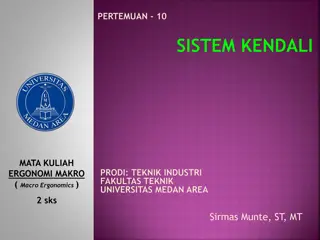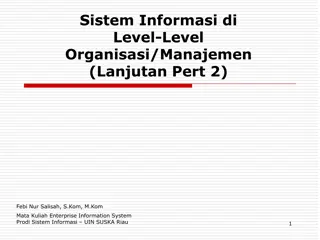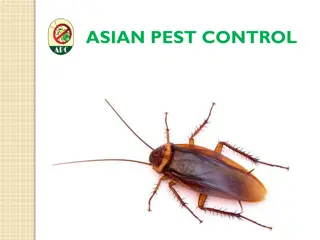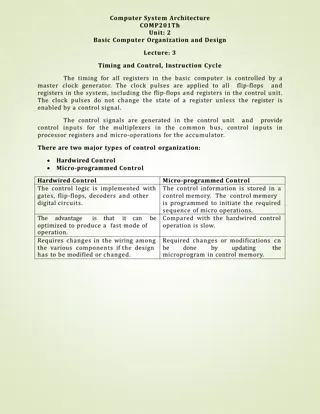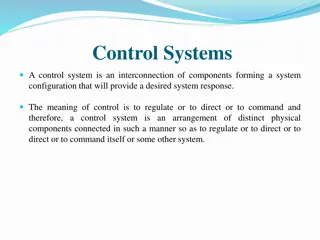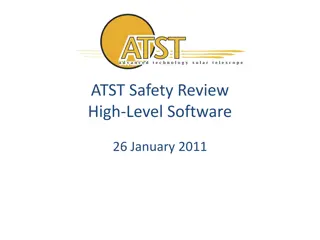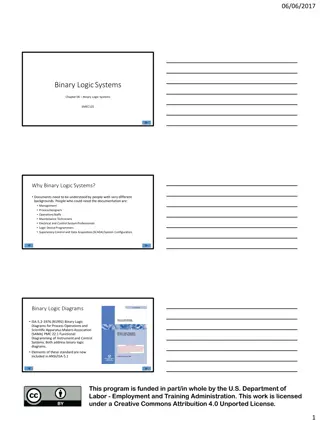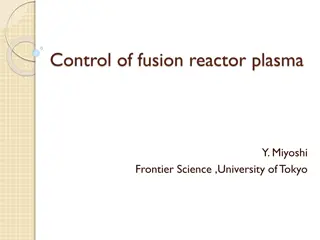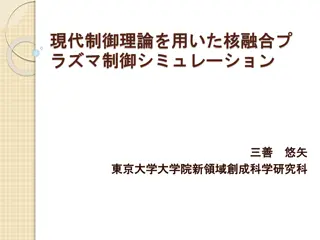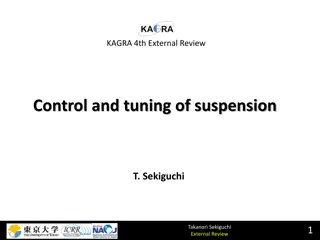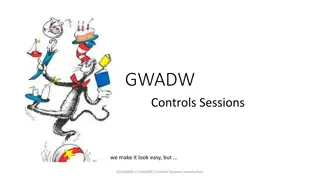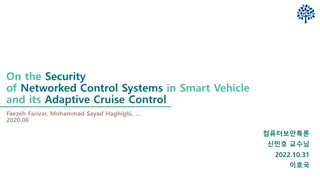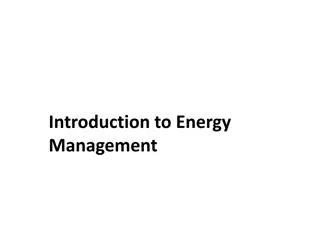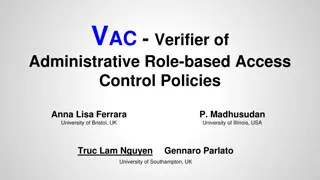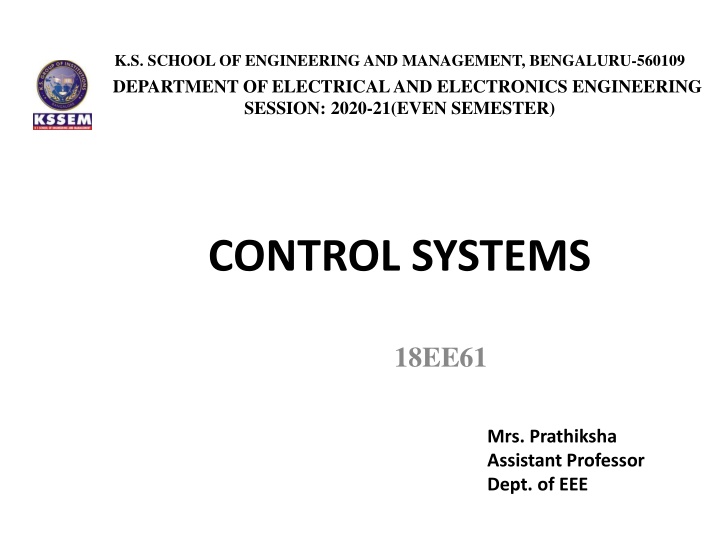
Introduction to Control Systems and Classification - K.S. School of Engineering and Management
Explore the fundamentals of control systems and their classification in the Department of Electrical and Electronics Engineering at K.S. School of Engineering and Management. Learn about mathematical models, transfer functions, feedback control systems, and more in this comprehensive study session for the 2020-21 academic year. Dive into topics like open loop and closed loop systems, optimal control, adaptive control, and various types of control systems based on hierarchy, presence of human interaction, feedback, and main purpose. Enhance your understanding of linear and non-linear control systems, time-varying systems, continuous and discrete data systems, and different system orders and damping types.
Download Presentation

Please find below an Image/Link to download the presentation.
The content on the website is provided AS IS for your information and personal use only. It may not be sold, licensed, or shared on other websites without obtaining consent from the author. If you encounter any issues during the download, it is possible that the publisher has removed the file from their server.
You are allowed to download the files provided on this website for personal or commercial use, subject to the condition that they are used lawfully. All files are the property of their respective owners.
The content on the website is provided AS IS for your information and personal use only. It may not be sold, licensed, or shared on other websites without obtaining consent from the author.
E N D
Presentation Transcript
K.S. SCHOOL OF ENGINEERING AND MANAGEMENT, BENGALURU-560109 DEPARTMENT OF ELECTRICAL AND ELECTRONICS ENGINEERING SESSION: 2020-21(EVEN SEMESTER) CONTROL SYSTEMS 18EE61 Mrs. Prathiksha Assistant Professor Dept. of EEE
Module 1: Introduction to Control Systems: Introduction, classification of control systems. Mathematical models of physical systems: Modelling of mechanical system elements, electrical systems, Analogous systems, Transfer function, Single input single output systems, Procedure for deriving transfer functions, servomotors, synchros, gear trains.
Introduction to Control Systems https://www.youtube.com/watch?v=XMfH2P2 Fc6Q A system is a collection of objects(components) connected together to serve an objective, or a system is a combination of components that act together to perform an objective. A control system in which the output quantity is controlled by varying the input quantity.
Classification of Control systems 1. Depending on the hierarchy a. Open loop s/m b. closed loop s/m c. optimal control s/m d. adaptive control s/m e. Learning control s/m
2. Depending on the presence of human being Manually controlled s/m Automatic Control s/m 3. Depending on the presence of feedback Open loop control system Closed loop control system or feedback control systems 4. According to the main purpose Position control systems Velocity control systems Process control systems Temperature control systems Traffic control systems, etc
Feedback control systems Linear and non linear control systems Time varying systems or time invariant control systems A) continuous data control systems and discrete data control systems B) ac (modulated) or dc (unmodulated) control systems Position control, traffic control process control or velocity control systems etc SISO s/m and MIMO s/m Type 0, Type 1, type 2 etc. First order, second order s/ms Undamped, underdamped, critically damped and overdamped s/ms
Open Loop Control systems In open loop control systems, output is not fed-back to the input. So, the control action is independent of the desired output. Here, an input is applied to a controller and it produces an actuating signal or controlling signal. This signal is given as an input to a plant or process which is to be controlled. So, the plant produces an output, which is controlled
In closed loop control systems, output is fed back to the input. So, the control action is dependent on the desired output.
The error detector produces an error signal, which is the difference between the input and the feedback signal. This feedback signal is obtained from the block (feedback elements) by considering the output of the overall system as an input to this block. Instead of the direct input, the error signal is applied as an input to a controller. So, the controller produces an actuating signal which controls the plant. In this combination, the output of the control system is adjusted automatically till we get the desired response. Hence, the closed loop control systems are also called the automatic control systems. Traffic lights control system having sensor at the input is an example of a closed loop control system.


